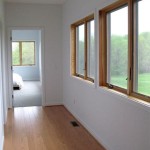```html
Paint Spraying Interior Walls: A Comprehensive Guide
Painting interior walls is a common home improvement project that can significantly enhance the aesthetic appeal of a living space. While traditional brush and roller methods are widely used, paint spraying offers an alternative approach with several advantages in terms of speed and finish. This article provides a comprehensive guide to paint spraying interior walls, covering essential considerations, equipment, techniques, and troubleshooting tips.
Paint spraying involves using compressed air or airless technology to atomize paint into a fine mist, which is then applied evenly to the surface. This method can achieve a smooth, consistent finish, especially on textured walls or intricate surfaces. However, successful paint spraying requires careful planning, proper equipment selection, and adherence to safety precautions.
Understanding the Benefits and Drawbacks of Paint Spraying
Paint spraying offers several benefits compared to traditional painting methods. The primary advantage is speed. Large areas can be covered much faster with a sprayer than with a brush or roller, making it ideal for extensive projects. Additionally, sprayers can produce a smoother, more uniform finish, minimizing brush strokes or roller marks. This is particularly beneficial on surfaces with imperfections or textures. Furthermore, paint sprayers can effectively reach tight spaces and intricate details that might be challenging to access with a brush or roller.
However, paint spraying also has certain drawbacks. The initial investment in equipment can be higher than that for brushes and rollers. Proper preparation is crucial, as overspray can be a significant issue. Masking and covering surrounding areas is essential to protect them from unwanted paint. Cleanup can also be more involved, requiring thorough cleaning of the sprayer and its components. Moreover, paint spraying typically results in higher paint consumption compared to traditional methods.
Selecting the Right Equipment for Paint Spraying Interior Walls
Choosing the appropriate equipment is critical for achieving optimal results when paint spraying interior walls. The main considerations include the type of sprayer, nozzle size, and air compressor (if applicable).
There are primarily two types of paint sprayers suitable for interior walls: airless sprayers and HVLP (High Volume Low Pressure) sprayers. Airless sprayers use high pressure to atomize the paint, making them faster and suitable for larger projects. They are generally more efficient for applying thicker paints and coatings. However, airless sprayers can produce more overspray compared to HVLP sprayers.
HVLP sprayers use a high volume of air at low pressure to atomize the paint. This results in less overspray and a finer finish, making them ideal for detail work and delicate surfaces. HVLP sprayers are generally more suitable for thinner paints and coatings. They are also favored for achieving a professional-looking finish.
The nozzle size of the sprayer determines the amount of paint that is dispensed and the width of the spray pattern. Smaller nozzles are typically used for thinner paints and coatings, while larger nozzles are used for thicker materials. The selection of the appropriate nozzle size depends on the type of paint being used and the desired finish. It is crucial to consult the paint manufacturer's recommendations for the optimal nozzle size.
If using an HVLP sprayer, an air compressor is required to supply the necessary air pressure. The compressor should have sufficient capacity to meet the sprayer's requirements, typically measured in CFM (cubic feet per minute). Ensure that the compressor delivers clean, dry air to prevent contamination of the paint and ensure proper atomization.
Preparing Interior Walls for Paint Spraying
Proper preparation is essential for achieving a professional-looking finish when paint spraying interior walls. This involves cleaning the walls, repairing any imperfections, and masking surrounding areas.
Begin by thoroughly cleaning the walls to remove any dirt, dust, grease, or stains. Use a mild detergent and water solution to wash the walls, followed by a clean water rinse. Allow the walls to dry completely before proceeding. This step ensures that the paint adheres properly to the surface.
Inspect the walls for any imperfections, such as cracks, holes, or dents. Repair these imperfections using appropriate patching compounds or fillers. Sand the repaired areas smooth to blend them with the surrounding surface. Prime the patched areas to ensure uniform paint absorption.
Mask all surrounding areas that you do not want to be painted, including trim, windows, doors, light fixtures, and furniture. Use painter's tape and plastic sheeting or drop cloths to protect these areas from overspray. Pay particular attention to edges and corners to create a clean and crisp line.
Ensure adequate ventilation in the room. Open windows and doors and use fans to circulate air. This helps to remove paint fumes and prevent the buildup of hazardous vapors. Wear appropriate personal protective equipment (PPE), including a respirator, safety glasses, and gloves.
Mastering Paint Spraying Techniques for Interior Walls
Once the preparation is complete, mastering the proper paint spraying techniques is crucial for achieving a professional finish. This involves controlling the sprayer, maintaining the correct distance, and applying even coats of paint.
Hold the sprayer perpendicular to the wall surface and maintain a consistent distance of approximately 6 to 12 inches. The exact distance depends on the sprayer type, nozzle size, and paint viscosity. Refer to the sprayer manufacturer's instructions for specific recommendations.
Use a smooth, even motion to apply the paint. Overlap each pass by approximately 50% to ensure uniform coverage and prevent streaks or gaps. Avoid arcing the sprayer, as this can result in uneven paint application.
Apply thin, even coats of paint rather than thick, heavy coats. Multiple thin coats are preferred over a single thick coat, as this minimizes the risk of runs, drips, and sags. Allow each coat to dry completely before applying the next coat.
Pay attention to corners and edges. Use a technique called "feathering" to gradually blend the paint into these areas. This involves lightly spraying the edges to create a smooth transition.
Troubleshooting Common Paint Spraying Problems
Despite careful planning and execution, occasional problems may arise during the paint spraying process. Understanding how to troubleshoot these issues can help ensure a successful outcome.
Runs and drips are common problems caused by applying too much paint in a single area. To correct runs and drips, immediately wipe them away with a clean cloth or sponge. Allow the area to dry completely, then lightly sand it smooth before applying another coat of paint.
Orange peel texture is a bumpy or uneven surface that can occur when the paint is not properly atomized or when the sprayer settings are incorrect. To correct orange peel texture, lightly sand the surface smooth and adjust the sprayer settings, such as the pressure or nozzle size. Ensure that the paint is properly thinned and that the sprayer is held at the correct distance from the wall.
Overspray is the unwanted mist of paint that can drift onto surrounding surfaces. To minimize overspray, use a lower pressure setting on the sprayer, hold the sprayer closer to the wall, and use appropriate masking and covering techniques. Immediately wipe away any overspray with a damp cloth.
Clogging can occur when the paint is not properly thinned or when the sprayer is not cleaned properly. To prevent clogging, thoroughly clean the sprayer after each use and use a high-quality paint that is compatible with the sprayer. If clogging occurs, disassemble the sprayer and clean the nozzle and other components according to the manufacturer's instructions.
Inadequate coverage may be due to using paint that’s too thin, moving the sprayer too quickly, or not overlapping spray passes enough. Ensure the paint being used has the correct viscosity, adjust your spraying speed, and increase the degree of overlap between each pass.
Post-Spraying Cleanup and Maintenance
After completing the paint spraying project, it is essential to clean the equipment thoroughly and perform routine maintenance to ensure its longevity. This involves disassembling the sprayer, cleaning all components, and storing the equipment properly.
Consult the sprayer manufacturer's instructions for detailed cleaning procedures. Typically, this involves flushing the sprayer with the appropriate cleaning solvent, such as water for latex paints or mineral spirits for oil-based paints. Disassemble the sprayer and clean all components, including the nozzle, filters, and fluid passages.
Inspect the sprayer for any signs of wear or damage. Replace any worn or damaged parts to ensure optimal performance. Lubricate the sprayer according to the manufacturer's recommendations.
Store the sprayer in a clean, dry place. Protect it from dust, moisture, and extreme temperatures. Properly storing the sprayer will help prolong its lifespan and ensure that it is ready for future projects.
```
How To Spray Paint Interior Walls Paintenance Melbourne

Spray Everything Fine Homebuilding

Should You Use A Sprayer For Interior Walls Semigloss Design

Using A Paint Sprayer Indoors How To Use An Indoor

Yes You Can Use A Paint Sprayer Indoors Our Spare Room Makeover Proves It Interior Wall Spray Painting Walls Tips

Using A Paint Sprayer Indoors How To Use An Indoor

How To Paint An Interior Room With A Sprayer Using Best Walls

How To Paint Interior Trim With A Sprayer Wagner Spraytech

How To Spray Paint Interior Walls

Paint Sprayer Vs Rolling When To Do What Honey Built Home








